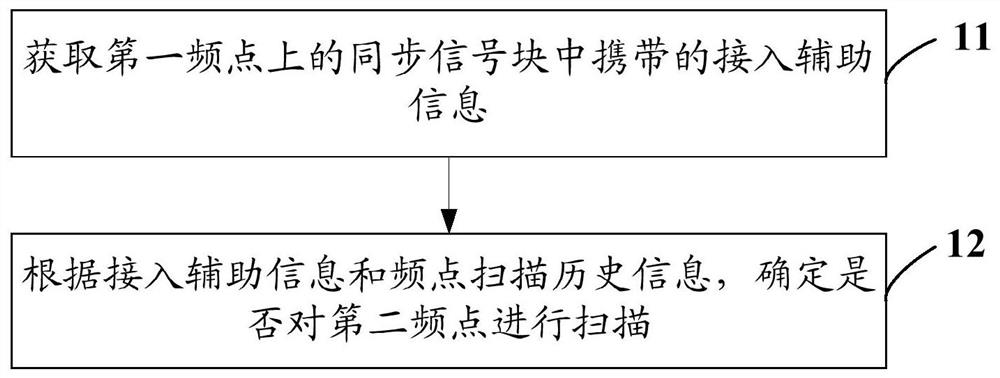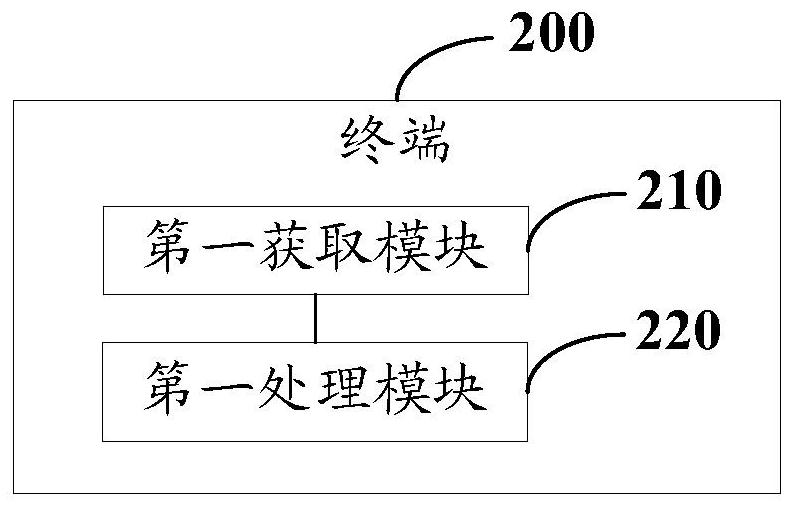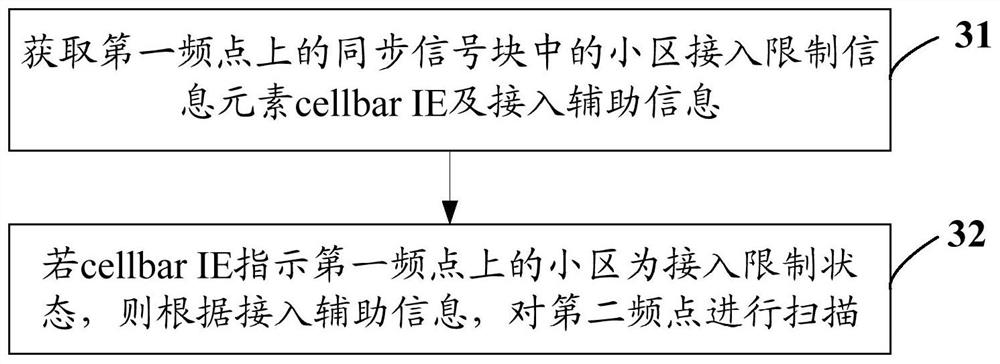A cell selection method and terminal
A cell selection and cell technology, applied in the field of communications, can solve problems such as time extension and high power consumption, and achieve the effect of improving efficiency and reducing power consumption of terminals
- Summary
- Abstract
- Description
- Claims
- Application Information
AI Technical Summary
Problems solved by technology
Method used
Image
Examples
example 1
[0039] Step 12 may include: ignoring the second frequency point if it is detected that the second frequency point indicated by the access assistance information is a scanned historical frequency point.
[0040] Assume that the terminal scans the frequency point f1 and finds that the cell on the frequency point f1 cannot be camped on or accessed, that is, it is not a suitable cell. The terminal further scans the frequency point f2 and finds that the cell on the frequency point f2 cannot be camped on or accessed, but the SSB detected on the frequency point f2 indicates that the sync raster (frequency point) to be scanned is f1; f1 is the historical frequency point that has been scanned. In order to prevent the terminal from repeatedly scanning the scanned frequency point, the terminal can ignore the syncraster obtained on the SSB of frequency point f2 and continue to scan other unscanned frequency points.
example 2
[0042] Step 12 may include: if it is detected that the second frequency point indicated by the access assistance information is a historical frequency point that has been scanned, then detecting the first time interval between the current moment and the last scanning moment of the second frequency point; If the first time interval is greater than the first preset interval threshold, the second frequency point is scanned; if the first time interval is smaller than the first preset interval threshold, the second frequency point is ignored. Wherein, when the first time interval is equal to the first preset interval threshold, the second frequency point may be scanned, or the second frequency point may be ignored.
[0043] Assume that the terminal scans the frequency point f1 and finds that the cell on the frequency point f1 cannot be camped on or accessed, that is, it is not a suitable cell. The terminal further scans the frequency point f2 and finds that the cell on the frequenc...
example 3
[0051] Detecting whether the target cell on the second frequency point indicated by the access assistance information is a historical cell that has been scanned, and ignoring the target cell if the target cell is a historical cell.
[0052] Assume that the terminal scans the frequency point f1 and finds that the cell with the strongest signal on the frequency point f1 (such as a cell with a PCI of X) cannot reside or access, that is, it is not a suitable cell; the terminal continues to scan the frequency point f2 and finds that the cell on the frequency point f2 The cell with the strongest signal cannot be camped on or accessed, but the SSB of this cell indicates that the sync raster (frequency point) to be scanned is f1, and the target cell is a cell whose PCI is X. Since the frequency point f1 is the scanned historical frequency point, and the target cell is consistent with the scanned historical cell (the cell whose PCI is X) on the frequency point f1, in order to prevent th...
PUM
 Login to View More
Login to View More Abstract
Description
Claims
Application Information
 Login to View More
Login to View More - R&D
- Intellectual Property
- Life Sciences
- Materials
- Tech Scout
- Unparalleled Data Quality
- Higher Quality Content
- 60% Fewer Hallucinations
Browse by: Latest US Patents, China's latest patents, Technical Efficacy Thesaurus, Application Domain, Technology Topic, Popular Technical Reports.
© 2025 PatSnap. All rights reserved.Legal|Privacy policy|Modern Slavery Act Transparency Statement|Sitemap|About US| Contact US: help@patsnap.com



